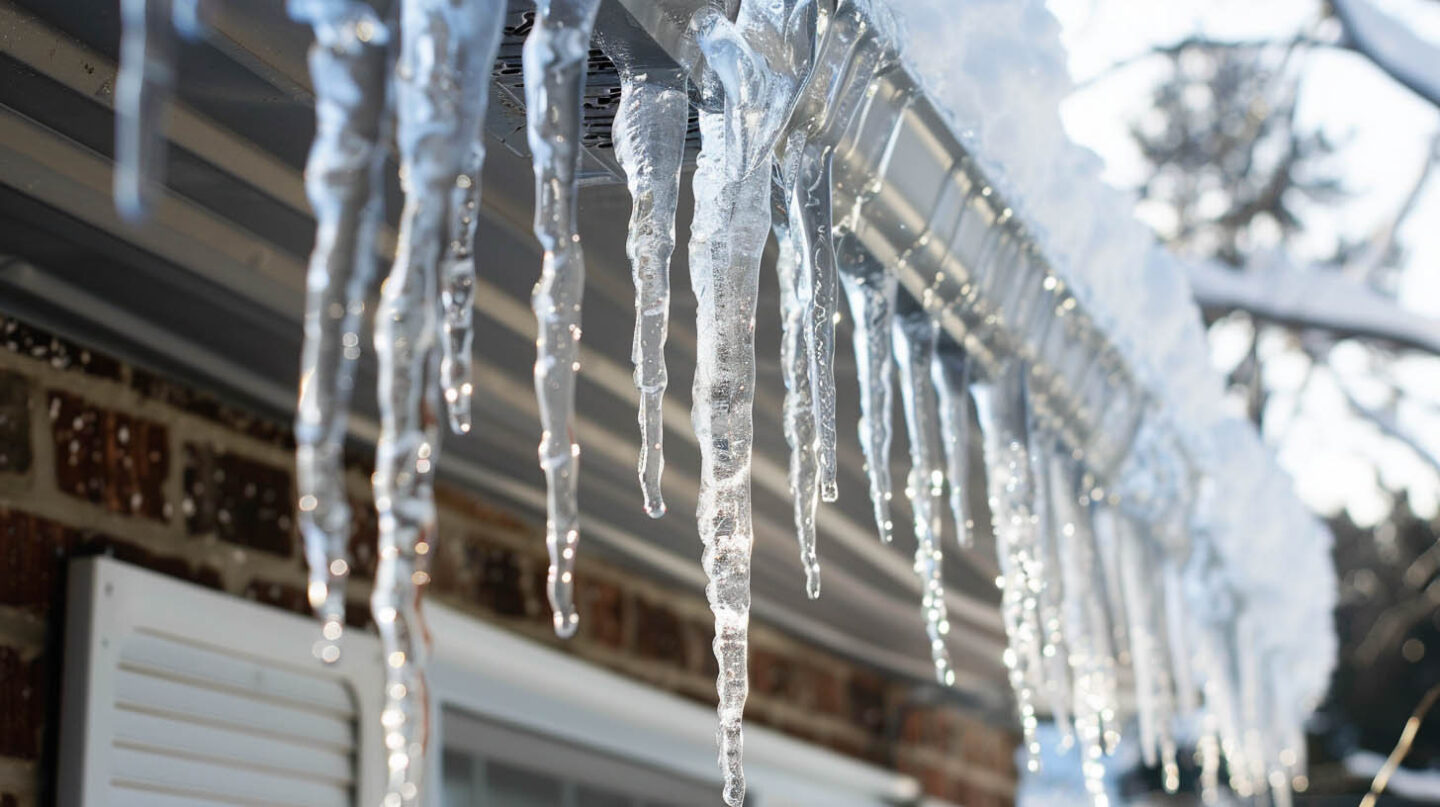Understanding the complexity of ice dam formation in the Triangle requires delving into the unique climatic conditions of this region. While the winters may seem mild compared to northern areas, certain factors can create a perfect storm for ice dams. At The Shingle Master, we emphasize the importance of vigilance for early warning signs, such as icicles and water stains, as these indicators signal potential issues in Raleigh, NC. Our expertise allows homeowners to understand the interrelationship between heat transfer and insulation, which plays a crucial role in preventing damage to roofs and exterior walls during winter weather events.
Understanding Ice Dams: Why They’re Rare in the Triangle
Ice dams form under specific weather conditions, often requiring prolonged snowfall and freezing temperatures. In the Triangle, the unique climate patterns—marked by milder winters and fluctuating temperatures—make these instances infrequent. Factors such as proper roof insulation, effective ventilation, and minimal snow cover contribute to preventing ice dam formation in this region. Homeowners can maintain their roofs to diminish heat loss and moisture buildup, thereby reducing risks associated with icicles or ridge formations that signal potential damming issues.
Unique Climate Patterns of Raleigh and Surrounding Areas
The climate in Raleigh and surrounding areas plays a significant role in the rarity of dam formation. Mild winters, coupled with inconsistent snowfall, create a unique weather pattern that limits the occurrence of heavy snow cover. When chilly conditions coincide with rapid temperature fluctuations, homeowners may observe potential melting and refreezing cycles. This fluctuation can lead to minimal heat loss from roofs, preventing significant moisture accumulation that typically leads to damming. Consequently, residents can breathe easy during winter weather events.
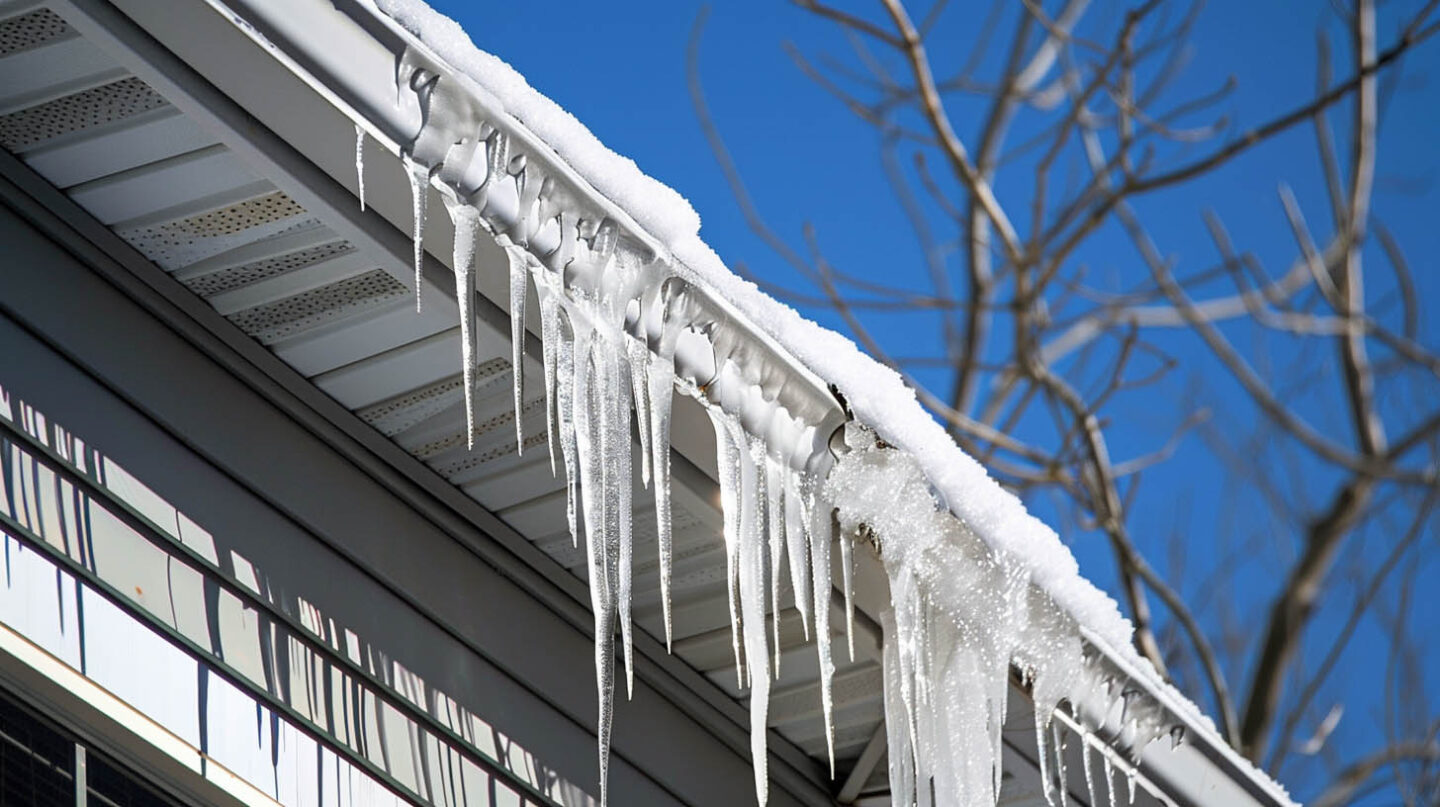
How Triangle Winters Differ from Northern Regions
Distinct from northern climates, Triangle winters often feature milder temperatures and reduced snowfall. This unique climate pattern results in less persistent snow cover, minimizing the risk of ice dam formation. The limited duration of cold snaps means that homeowners experience fewer fluctuations causing melting snow and re-freezing. Unlike areas with consistent sub-zero temperatures, Raleigh’s variability in winter weather contributes to less heat loss through roofs, making preventative measures like adequate insulation and ventilation particularly vital in maintaining roof integrity.
The Science Behind Ice Dam Formation
Ice dam formation occurs when melting snow accumulates and refreezes near the edge of a roof. Key factors include heat transfer from the home, which causes snow on the roof to melt, while cooler temperatures at the edge create a ridge of ice. Effective roof insulation and ventilation can significantly mitigate these conditions. Homeowners should be vigilant for signs of potential ice damming, such as icicles and new water stains, which may indicate an underlying issue requiring preventative measures.
What Causes Ice Dams to Form on Roofs
Heat transfer plays a crucial role in the formation of dams on roofs. As the roof surface warms due to the heat escaping from the attic, melting snow begins to flow down towards the edge of the roof. However, if temperatures outside drop, this water can freeze upon reaching the colder areas, creating a ridge of ice. Insufficient roof insulation and inadequate ventilation exacerbate the situation, leading to moisture buildup and potential leakage, which can cause significant damage to exterior walls and shingles.
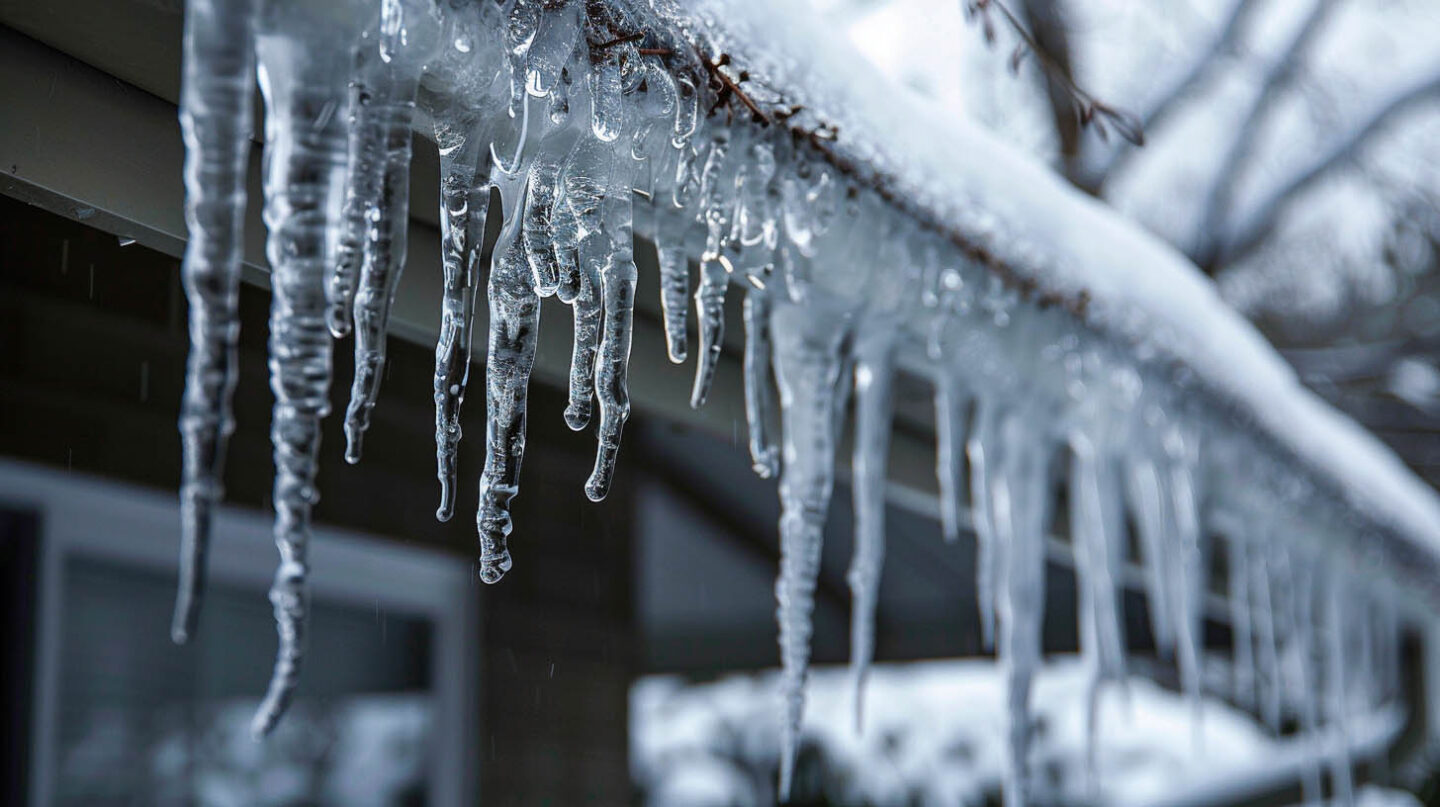
Specific Conditions Needed for Ice Dams in the Triangle
Localized fluctuations in temperature play a crucial role in ice dam formation within the Triangle. For ice dams to develop, a combination of persistent snowfall and subsequent melting must occur, typically following a winter weather pattern with contrasting warm and cold spells. Specifically, heat loss from household activities can create a warm roof surface, while snowfall covers the edges. This disparity leads to melting snow that can refreeze at the roof’s eave, resulting in a ridge of ice that blocks drainage from gutters.
When Do Ice Dams Happen in Raleigh-Durham?
Ice dams in Raleigh-Durham typically occur during rare cold snaps, usually when temperatures fluctuate around freezing, coupled with heavy snowfall. These conditions can create the perfect environment for ice formation, despite the region’s generally milder winters compared to northern areas.
Historical Weather Events That Led to Ice Dams Locally
Significant weather events have shaped the occurrence of ice dams in the Triangle area, albeit infrequently. For instance, rare snowfalls combined with sudden temperature drops have created conditions conducive to ice dam formation. During winter months, melting snow on roofs can freeze rapidly at the edge of the roof, forming a ridge of ice. Moist air trapped beneath the snow cover additionally fuels potential leaks and structural concerns, leading to costly damage for homeowners. Awareness of such historical patterns is essential for preventative measures.
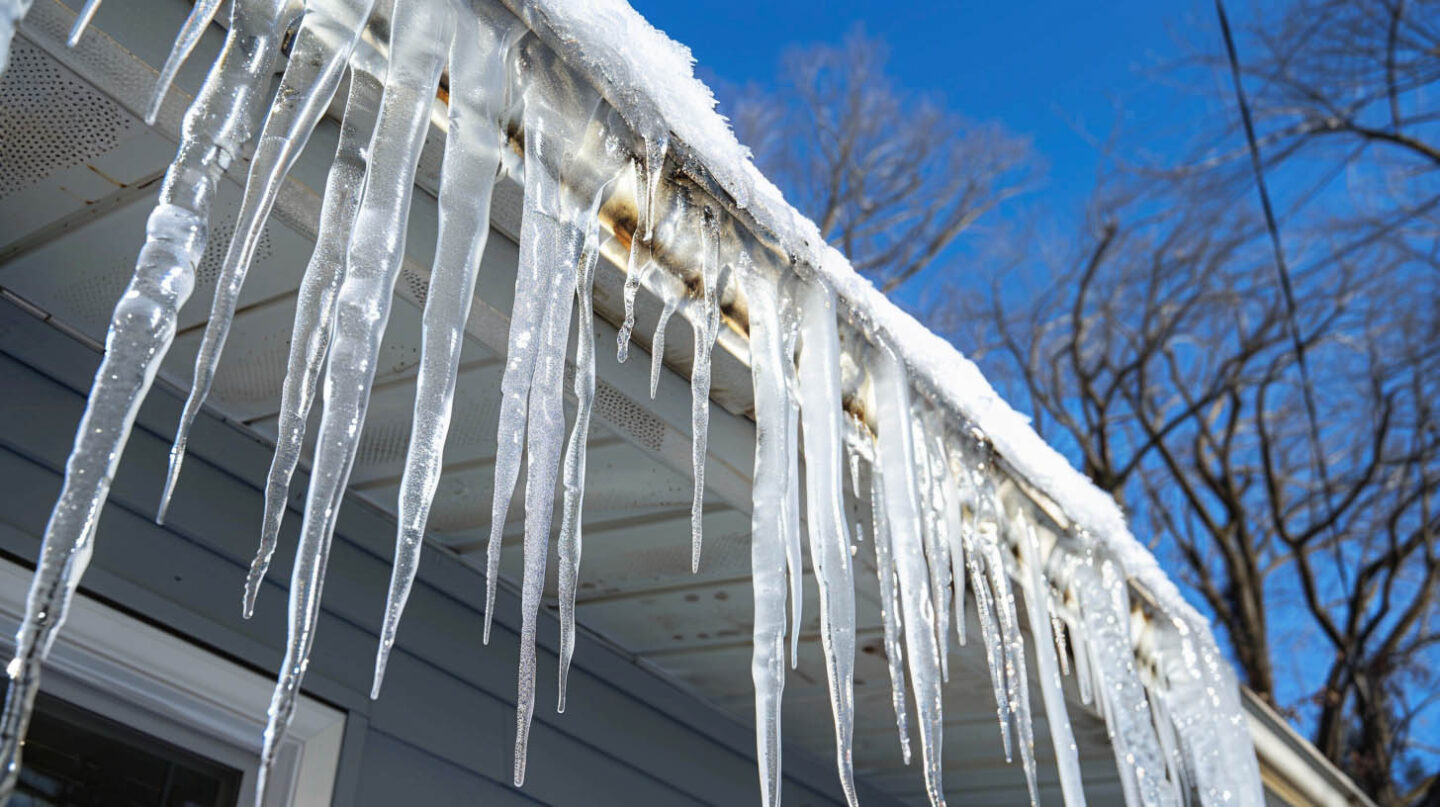
Unpredictable Winter Patterns and Their Impact on Roof Risk
Unpredictable winter patterns significantly influence the risk of ice dam formation on roofs in the Triangle. Unlike northern regions that experience consistent snowfall and freezing temperatures, this area sees fluctuating temperatures that can lead to unpredictable melting and refreezing cycles. As moist air rises and meets cold roof surfaces, it can create conditions favorable for ice dams, particularly at the edge of the roof. Homeowners should remain vigilant during these irregular winter weather patterns to mitigate potential damage effectively.
Early Warning Signs of Ice Dams on Your Home
After a big snowfall, you have to watch for warning signs of an ice dam. If you spot problems early, you can save a lot of money. The most plain clues can be seen from the ground. You might see thick icicles, ice on the roof, or water stains.
You should look closely at your roofline, your gutters, and the exterior walls of your home. Sometimes, warning signs can be easy to spot. Other times, they are hard to see. Knowing what to look for will help you keep your home safe from damage.
Visual Clues: Icicles, Water Stains, and More
Icicles hanging from the edge of the roof are a striking visual cue that something may be amiss. These formations can indicate a process of ice damming, suggesting potential heat transfer issues and airflow problems leading to melting snow. New water stains inside your home, especially near skylights and exterior walls, can signify moisture intrusion. Homeowners should also inspect for signs of mildew or mold, which can become prevalent due to excessive moisture caused by unseen leaks.
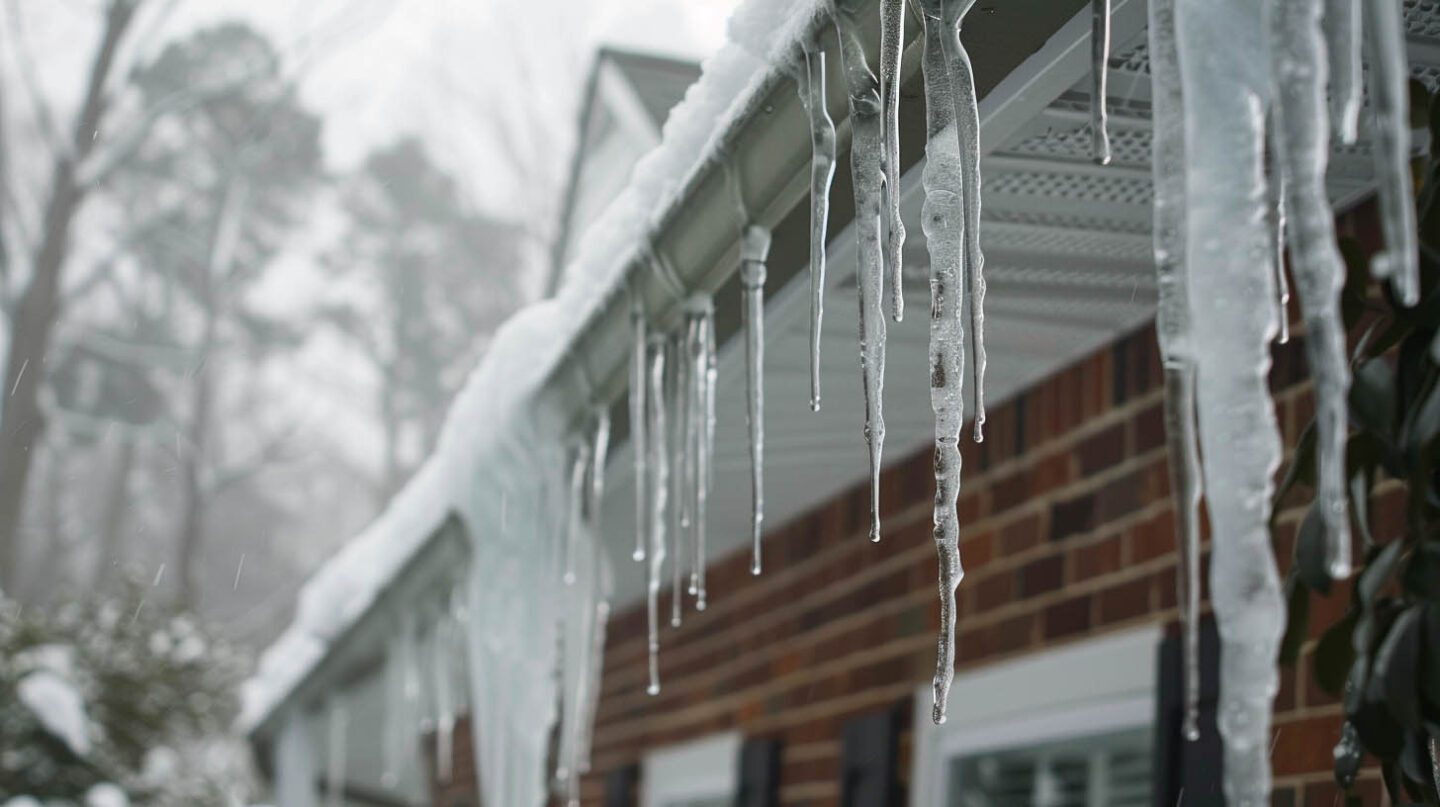
Detecting Subtle Signs—What Most Triangle Homeowners Miss
Attention to detail during winter weather is crucial for maintaining your home. Beyond obvious icicles, new water stains on exterior walls or ceilings are significant warning signs of potential ice damming. Homeowners should also observe signs of moisture, such as a musty smell or mildew in the attic, which often indicate air leakage or inadequate roof insulation. Regularly checking ventilation and roof surface conditions can help prevent hidden issues from escalating into severe leaks or structural damage.
Potential Damage from Ice Dams, Even in Mild Climates
Ice dams can lead to significant issues even in warmer areas like the Triangle, where winters are mild. Accumulated melted snow transforms into water that gets trapped behind a ridge of ice, creating the potential for leaks in roofing materials. This seepage can damage exterior walls, soffits, and insulation, fostering moisture-related problems such as mold and mildew. Observing warning signs like new water stains and icicles can help homeowners mitigate these risks before extensive damage occurs.
How Ice Dams Lead to Leaks and Structural Concerns
Ice dams can create a host of structural issues, primarily due to the moisture they trap against the roof surface. As melting snow accumulates at the edge of the roof, it can seep into cracks and gaps, facilitated by air leakage and inadequate roof insulation. This seepage often leads to new water stains on ceiling interiors, while excessive moisture can promote mold and mildew growth. Over time, these factors can compromise roofing materials and even the integrity of exterior walls, making timely preventative measures essential.
Long-Term Effects on Siding, Gutters, and Insulation
Prolonged ice damming can severely impact the integrity of your exterior walls, gutters, and insulation. Water leakage caused by melting snow can lead to structural issues, including mold and mildew growth over time. Gutters may become overwhelmed by excess moisture, risking detachment from the home. Additionally, improper drainage can compromise roof shingles and insulation, leading to higher energy costs. Awareness of these long-term effects is crucial for homeowners aiming to maintain their property during winter weather fluctuations.
What’s Next
Mitigating the risks associated with ice dam formation is essential for homeowners in the Triangle. Understanding the unique climate conditions and specific factors contributing to this phenomenon can help prevent potential damage. Regularly checking for warning signs such as icicles or new water stains enables timely intervention. Implementing effective insulation, ventilation, and preventative measures like using a roof rake can minimize the threat of ice dams. By prioritizing these strategies, homeowners can safeguard their properties against unforeseen winter impacts. As a GAF Master Elite Contractor, BBB A+, Haag Certified Inspector, NC Licensed General Contractor, and recognized as Raleigh’s Best Roofing Contractor, NHBA and the Raleigh Chamber of Commerce, we are committed to providing top-notch service to protect your home.
Frequently Asked Questions
What are ice dams really?
Ice dams are formed when snow on a roof melts and refreezes at the eaves, creating a barrier that traps water. This situation can lead to leaks and damage, particularly under specific conditions that may arise in regions like the Triangle during winter months.
How to spot ice dam warning signs?
Look for icicles hanging from the roof’s edge and water stains on ceilings or walls. Additionally, check for unusual melting patterns on snow cover. These signs indicate potential ice dam formation that could lead to costly damages if not addressed promptly.
Read our blog: Nail Placement 101: Hitting the Wind Warranty Zone

